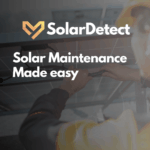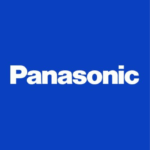
In the realm of solar energy systems, the reliability of inverters plays a pivotal role in overall performance and sustainability.
This solar inverter reliability study aims to clarify the comparative reliability of two prevalent inverter types used in solar installations: microinverters and string inverters.
The objective is to provide an empirical analysis based on operational data, guiding solar professionals and homeowners in making informed decisions regarding inverter selection.
As part of this study, we analyzed the claims data gathered from 100,000 solar energy systems across five years.
Table of Contents
Comparative Reliability Analysis
Empirical evidence from operational data underscores a notable disparity in the reliability of microinverters and string inverters.
Analysis reveals that the failure rate within the first two years of operation stands at approximately 0.89% for string inverters (9 in 1000 units), in contrast to a markedly lower rate of 0.0551% for microinverters (less than .55 in 1000 units).

This differential can be attributed to the operational design of the inverters: microinverters function independently, ensuring that the malfunction of one unit does not impact others.
In contrast, due to their central role in a solar array, string inverters exhibit a more pronounced effect when failures occur, impacting the entire panel or array.
Claims Data Analysis: Overview and Methodology
To deepen our understanding of inverter reliability, we scrutinized claims data from over 100,000 solar energy systems spanning five years.
This comprehensive analysis aimed to determine the frequency of failures and the associated financial implications for each inverter type. By examining this claims data, we sought to identify trends in inverter performance, particularly regarding failure rates and the subsequent financial impact, thereby providing a holistic view of inverter reliability.
Findings from Claims Data
Our analysis revealed a notable trend in the timing of claims. Most of the claims were filed shortly after installation, suggesting a prevalence of issues related to warranty or installation quality.
Specifically, the average time to claim was 335 days, with a standard deviation of 262 days. Since microinverters are known to fail more rapidly post-installation, this indicates a higher incidence of early-life failures in microinverters than in string inverters.

In terms of financial impact, the majority of claims were for smaller amounts, indicating that the costs associated with repairing or replacing failed inverters were generally not exorbitant.
The average claim payout was found to be $446, with a standard deviation of $303. This data suggests that string inverters, known for commanding lower payout amounts, were responsible for a larger proportion of these smaller claims.

Cost Implications and Operational Impact
While microinverters demonstrate superior reliability, their adoption is tempered by higher acquisition and maintenance costs.
In contrast, string inverters, despite their higher failure rate, offer a more cost-effective solution upfront.
The operational impact of these failures is more significant, however, as the malfunctioning of a string inverter typically affects the entire solar panel array, leading to more extensive system downtime and potential loss of efficiency.
Claims Rate Comparison and Reliability Conclusion
The final analysis involved a detailed examination of the claims rate for microinverters and string inverters.
The data indicated a claims rate of 0.0551% for microinverters, translating to roughly 0.55 claims per 1,000 units installed. Conversely, string inverters exhibited a higher claims rate of approximately 1.03%, equating to about 10.3 claims per 1,000 units. This disparity highlights the significantly higher frequency of claims associated with string inverters, despite their lower individual claim amounts.

Furthermore, the absolute number of claims for string inverters was higher, even when considering the smaller base of units installed.
This analysis concludes that string inverters, while more cost-effective initially, are associated with a higher risk of failure and subsequent claims.
This finding underscores the need for careful consideration of both upfront costs and long-term reliability when selecting inverters for solar energy systems.
Advantages and Limitations of Each Inverter Type
Microinverters:
Advantages:
- Enhanced Reliability: As evidenced by lower failure rates, microinverters offer superior reliability.
- Independent Operation: One unit’s failure does not impact others’ performance, ensuring minimal disruption.
- Improved Efficiency: They optimize each solar panel’s output individually, enhancing overall system efficiency.
Limitations:
- Higher Costs: The initial investment and maintenance costs are significantly higher than string inverters.
- Complex Installation: They require a more intricate installation process, potentially increasing labor costs and time.
String Inverters:
Advantages:
- Cost-Effectiveness: Lower upfront costs make string inverters attractive for budget-conscious projects.
- Simpler Installation: Their installation process is generally less complex, resulting in lower labor costs and quicker setup.
Limitations:
- Lower Reliability: Higher failure rates and increased claims suggest a less reliable performance over time.
- System-Wide Impact: Failures can affect entire solar arrays, leading to more significant power losses and operational disruptions.
Strategic Considerations for Inverter Selection
Solar professionals must weigh various factors when selecting inverters for solar installations. The choice between microinverters and string inverters should be influenced by:
- Budget Constraints: Consider the balance between initial investment and long-term operational costs.
- System Size and Scope: Larger arrays might benefit more from the cost-effectiveness of string inverters, whereas smaller residential systems could leverage the reliability of microinverters.
- Installation Environment: Factors like shading, panel orientation, and geographic location can influence the efficiency and suitability of each inverter type.
- Maintenance and Operational Concerns: Evaluate the ease of maintenance and the impact of potential failures on overall system performance.
Microinverter vs String Inverter: Comparative Analysis of Claim Amounts
Claim Amounts and Operational Costs
Analysis of the average claim amounts for microinverters and string inverters reveals a nuanced picture.
On average, a failed microinverter claims $464.90, compared to $432.54 for a failed string inverter. The higher claim amount for microinverters correlates with their elevated initial costs and the more intricate and labor-intensive repair processes required.
The labor costs, a significant contributor to the overall claim amount, are notably higher for microinverters due to their complex installation and repair procedures.
Failure Timeframe Analysis
An intriguing aspect of our analysis is each inverter type’s average time to failure. Microinverters exhibit an average failure time of 261 days post-installation, while string inverters show a slightly longer average of 269 days.
This finding is particularly interesting considering the previously established lower failure rate of microinverters compared to string inverters. It implies that while microinverters are generally more reliable, those who fail tend to do so in a shorter timeframe.
String vs Microinverters: Solar Inverter Reliability and Suitability for Home Use
Claims Frequency and Rate
When examining claim severity, microinverters, despite their marginally higher claim amounts, are overshadowed by the difference in claims rate. String inverters demonstrate a higher likelihood of claims, indicating a general trend towards less reliability. For example, installing 25 microinverters still presents a lower failure risk compared to the high failure rate of string inverters.
Comparative Data Summary
| Feature | String Inverters | Microinverters |
| Average Claim Amount | $432.54 | $464.90 |
| Days to Failure | 269 days | 261 days |
| Claims Rate | 1.03% | 0.0551% |
The data underscores microinverters as a more reliable option for residential use. Despite a faster average time to failure, their significantly lower claims rate and relatively higher claim amounts, reflecting their installation and repair costs, make them a favorable choice.
However, shading, cost, warranty, installation conditions, and maintenance requirements must be considered.
When to Opt for String Inverters
Despite their higher failure probability, string inverters maintain their popularity in large commercial or residential establishments due to their lower initial costs and simpler installation process.
They are particularly suitable for installations where detailed data monitoring is not a priority and where future expansion is not anticipated. However, the typically shorter warranties and potential frequent replacements are factors that need careful consideration.
Protecting Solar Energy Investments: The Right Inverter Choice
The burgeoning growth of solar energy highlights the importance of choosing the right inverter system for protecting such significant investments. For residential owners, microinverters, despite their higher initial costs, offer greater reliability and long-term benefits, including longer warranty periods and potentially higher claim amounts in case of failure.
Conclusion: Making an Informed Decision
In conclusion, the decision between microinverters and string inverters hinges on thoroughly evaluating various factors such as cost, monitoring needs, maintenance, and flexibility.
While both types perform the same fundamental function, regular maintenance can prolong their lifespan and maximize the return on investment. As the world transitions towards more sustainable energy solutions, making informed decisions about solar system components, particularly inverters, becomes crucial for ensuring the efficiency and longevity of solar installations.


